First Aid
What is First aid?
First aid is the immediate care given to a victim of an accident, sudden illness, or other medical emergency. Proper first aid can save your child’s life, especially if he is bleeding heavily, has stopped breathing or has consumed something that could be harmful. First aid can also prevent the disease or accident from causing too much damage.
Why is First aid so important?
In any medical emergency, first hour or first few minutes are always of paramount importance. This is the reason it is called the Golden Hour. What you can do immediately, will mean a lot in the course of disease or accident.
What are the basic tenets of First aid?
General Rules for First Aid :
- Provide Urgent Care.
- Examine the child for individual injuries.
- Treat for Shock.
- Call for a Physician.
- Analyze the situation quickly and decide whether you can help the child.
- If you decide to treat him, begin at once.
- If you are confused or unsure of yourself, do not attempt heroics.
- If you can get direction on phone, act accordingly.
- Otherwise wait.
What are the essentials for being ready for First aid?
A First aid kit consisting of
- First Aid Manual (clearly explains how to handle basic problems)
- Basic Bandages (sterile cotton & gauze pads, assorted adhesive bandages, roller bandage, elastocrepe bandage)
- Basic Lotions (antiseptic, soap, common antibiotic powder/ cream, burn ointment, Skin lotion, Calamine lotion)
- Basic Drugs (paracetamol {aspirin is not recommended for children under age 12}, antacid tablets). If going on vacation, ask your doctor for extra prescription medications eg for fever, cold, loose stools, vomiting etc
- Basic First Aid Tools (tweezers, small mirror, small pair of scissors, safety pins, Thermometer, plastic gloves, flashlight and extra batteries)
Blanket (stored nearby)

Where should the First aid box be kept?
A well-stocked first-aid kit, kept in easy reach, is a necessity in every home. Having supplies gathered ahead of time will help you handle an emergency at a moment’s notice. Medicine chest is where first-aid box should be kept. Because the kitchen is where most household accidents commonly occur, in or near the kitchen is the most advisable place in which to keep the first-aid box. Keep all first aid equipment out of reach of children, but easily accessible for adults. A first-aid box should always be regularly checked to replace missing items or those that may have become outdated.
How should the First aid provider react when dealing with an emergency?
- KEEP CALM – Remaining calm while helping a child will help him/her to keep calm and cooperate. If your child becomes anxious or excited the extent of the damage from the injury can increase.
- PLAN QUICKLY ABOUT WHAT YOU NEED TO DO – Learn basic procedures, or have your first aid manual available, so you can care for the child.
- SEND FOR PROFESSIONAL HELP – Reaching for help quickly could save a life. Keep your local emergency telephone numbers handy.
- AN ENCOURAGEMENT TO THE INJURED PERSON – Let the child know that help is on the way and try to make him as comfortable as possible. Showing care and concern can give them hope during the circumstances
Principles of managing an injury:
RICE for Injury Relief
The “RICE” method can help control pain and swelling and minimize the side effects of an injury.
Rest
Ice
Compression
Elevation
How does RICE work?
Rest is essential to keep an injury from getting worse. If you ignore the problem, you may continue to aggravate the tissue damage. This doesn’t mean you have to stop all activities completely. You can try “relative rest,” which means continuing an activity if pain allows, or switching to an activity that doesn’t cause pain – like swimming for an ankle sprain. If any activity hurts, don’t do it. If it doesn’t, continue. It may mean you can do only part of an activity, but this might be better than stopping it completely.
Ice or anything cold can effectively decrease pain from an injury. Icing deadens pain and beneficially changes blood circulation: It increases circulation to the skin but decreases it in deeper tissues where bleeding may be occurring. An ice pack can be used on the injured part as soon as possible and kept there for 20 minutes. Place a thin sheet, napkin, or layer of mineral oil between the skin and the pack to protect the skin surface.
Smaller areas can be treated with ice massage. Ice cubes in a handkerchief can be rubbed on the injured part for 5 to 10 minutes.
If the skin turns white or blue during icing or ice massage, stop immediately. Cold treatments can be repeated every 2 hours. There is no advantage to using ice packs or massage longer or more often.
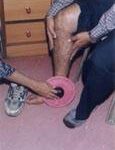
If the skin turns white or blue during icing or ice massage, stop immediately. Cold treatments can be repeated every 2 hours. There is no advantage to using ice packs or massage longer or more often.
Compression of the injured area prevents fluid from collecting. An elastic wrap or stocking can be very effective. It should be applied, firmly but not tightly, right away. (You can ice right through a thin wrap.) If the part of the arm or leg that is farthest from the heart throbs after compression, the wrap is too tight and needs to be loosened. Reapply compression wraps every 4 hours. Compression will help if the swelling is from bleeding, and it may also decrease pain. The reason for this is not well understood, but many people feel better with something tight (but not too tight) on an injured wrist or ankle.
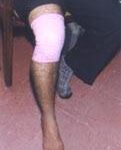
Elevation of the affected extremity limits swelling by using gravity to help drain fluid from the injured tissue. Of course, this advice is more practical for ankles and hands than backs and hips. Whenever resting, elevate his injured arm or leg.
Resuming normal activity: Using the RICE method for pain control may allow you to get your child back into the normal routine without taking a lot of time off. But remember: He is not healed just because the injury doesn’t hurt anymore. He still has to regain normal range of movement and strength. Until this happens, your child is more likely to get reinjured.

What about applying Heat?
Heat, like ice, can deaden pain, and every one feels good with heat fomentation. The problem is that it can also promote swelling–something we want to avoid after an injury. Also, heat may increase deep circulation, which can be devastating if bleeding is involved.
Once the injury is under control, and the greatest discomfort is due to stiffness, heat can help. Usually this means at least 2 or 3 days after an injury has occurred. You can use hot packs to help loosen up the joint before activity. But beware: If any swelling develops, keep heat away from your child.

What to do?
MINOR INJURIES:
CUTS:
Cleanse area thoroughly with soap and warm water, carefully washing away any dirt.
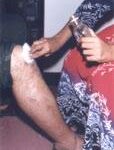
Apply direct pressure to wound until bleeding stops.

Put sterile bandage on wound. Clean, sterile piece of gauze is enough. Do not use any ointment/ powder/ turmeric till you reach your doctor. Idea is to cover the wound with a clean pad and to apply compression to stop the flow of blood.
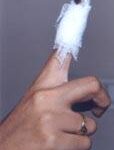
If cut is deep, get to a doctor as quickly as possible.
ABRASIONS (SCRATCHES):
- Wash thoroughly with soap and warm water.
- If it bleeds or oozes, bandage it to protect it from infection
MINOR BITE
BEE STINGS
- Remove the stinger by scraping with your fingernail
- Wash the area thoroughly with soap and water
- Apply ice, calamine lotion, or baking soda-and-water mixture to relieve the swelling and pain
A stinger that is not removed continues to release venom into the body for as long as 20 minutes.
Do not remove a stinger with tweezers. Squeezing releases more of the poison into the body. The swelling should be gone within 24 hours.
FRACTURES
Fractures often occur as a result of a fall or a collision. The bones of the arms and legs are particularly vulnerable to breakage, but any bone in the body can be fractured. The type of first aid administered depends upon the kind of fracture and its location in the body.
Any Handy Stiff material can be used for support, eg. visiting cards as shown.

JOINT SPRAIN/ LIGAMENT STRAIN
- Affected joint begins to swell immediately.
- Joint may also turn black and blue due to the escaped blood from torn blood vessels.
- Child will experience excruciating, shooting pains at the time of the injury because many nerves are injured in a sprain. If ankle or knee involved, instability of the joint may be complained.
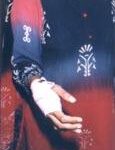
TREATMENT:
- RICE treatment
- Thermotherapy (applying moist heat) promotes healing but should not be applied to a muscle or ligament injury for at least 24 hours because heat will increase the swelling. After the swelling has gone, you should alternate applying cold compresses and moist heat to the injury.
- An injury is best treated with warm, wet packs. To prepare warm wet packs: place a water-dampened towel in a microwave oven for about 30 seconds. Check to make sure the towel is not too hot before placing it on the skin. If a microwave oven is not available, run a towel under very hot tap water or soak it in boiling water, wring it out, and apply it to the injury.
- A sprained arm should be placed in a sling.
- Most sprains take at least 6-8 weeks to heal.
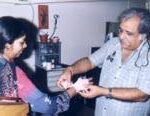
CONCUSSIONS AND CONTUSIONS
A sharp blow to the head could result in a concussion, a jostling of the brain inside its protective, bony covering. A more serious head injury may result in contusions, or bruises to the brain.
A period of unconsciousness may indicate brain damage and accompanies many head injuries.
- For handling common household injuries Click here
- To know more about Foreign Bodies Click here
- If you have a query and you are a registered user, click here.
